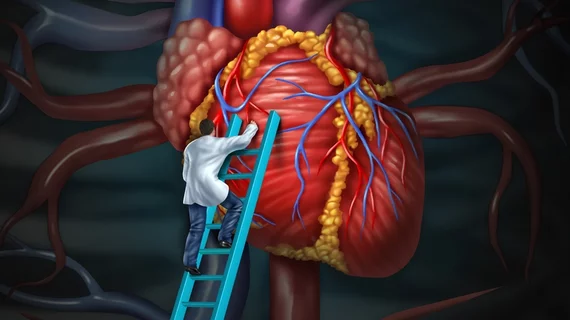Left main PCI still safe at hospitals without onsite cardiac surgery
Unprotected left main (LM) percutaneous coronary intervention (PCI) at facilities without onsite cardiac surgery is a safe treatment option for patients with LM coronary artery disease, according to new data published in the American Journal of Cardiology.
“Many centers without onsite cardiac surgery are now performing PCI routinely with excellent short-term and long-term outcomes,” wrote lead author Laura Hanson, BBMed, MD, a cardiologist with Alfred Health in Australia, and colleagues. “Nonetheless, unprotected LM PCI at non-surgical centers (NSCs) remains controversial because of perceived potential complications and hemodynamic instability.”
Hanson et al. tracked data from 730 LM PCI patients who were treated at one of 30 Australian hospitals from January 2014 to December 2018. Patients who had previous coronary artery bypass graft (CABG) surgery were excluded.
Nineteen percent of patients underwent LM PCI at NSCs. The remaining patients underwent the procedure at a surgical center. The NSC group had a younger mean age (69 years old vs. 72.3 years old) and a slightly smaller percentage of male patients (72% vs. 75%). Patients in the NSC group were also more likely to present with moderate-severe left ventricular systolic dysfunction, ST-elevation myocardial infarction or cardiogenic shock.
The unadjusted in-hospital mortality (23% vs. 11.4%) and 30-day major adverse cardiac event (26% vs. 16%) rates were higher among NSC patients. After making certain adjustments, however, treatment at a surgical center “was neither a predictor of in-hospital mortality, 30-day mortality nor long-term survival at 60 months.”
One potential limitation of this analysis was that only PCI patients were included, with CABG patients and patients treated with medical management all being excluded. Also, data on operator-level variables and lesion complexity were unavailable.
However, the team noted that its analysis included more evidence from a larger number of facilities than prior studies on this topic.
“That a protective effect of onsite cardiac surgery on long-term mortality was not observed in a hemodynamically stable subset of patients (excluding cardiogenic shock, out-of-hospital cardiac arrest, preprocedural intubation, and mechanical circulatory support), underscores the feasibility and acceptable safety performance of unprotected LM PCI at NSCs,” the authors concluded.
Read the full study here.

